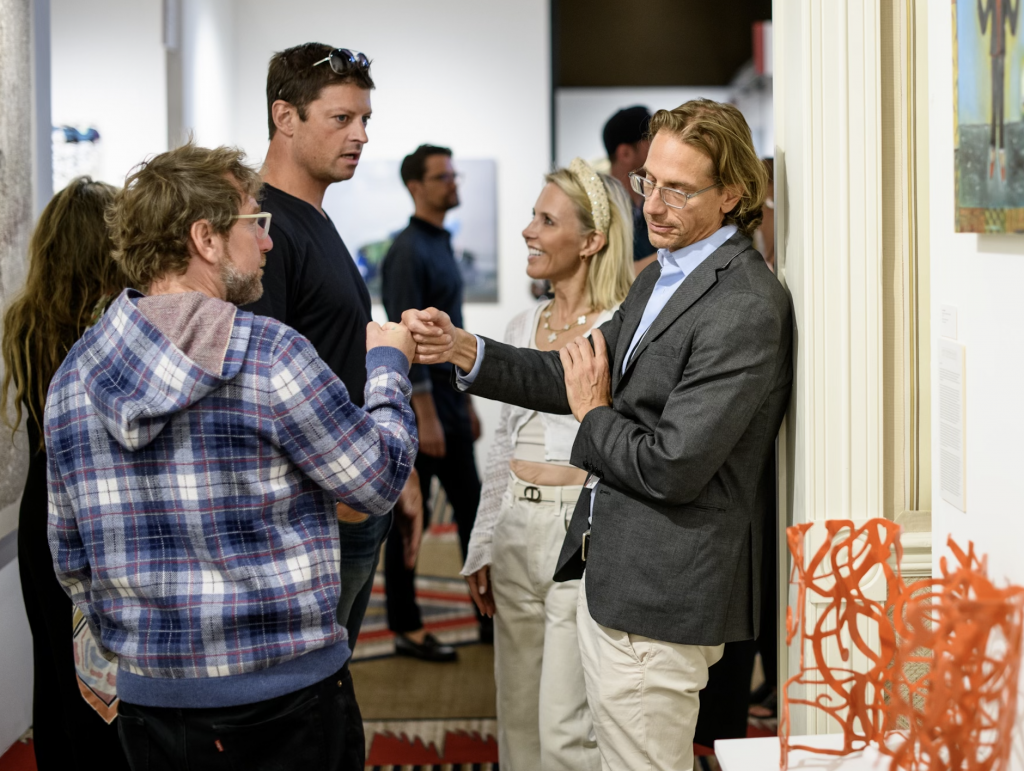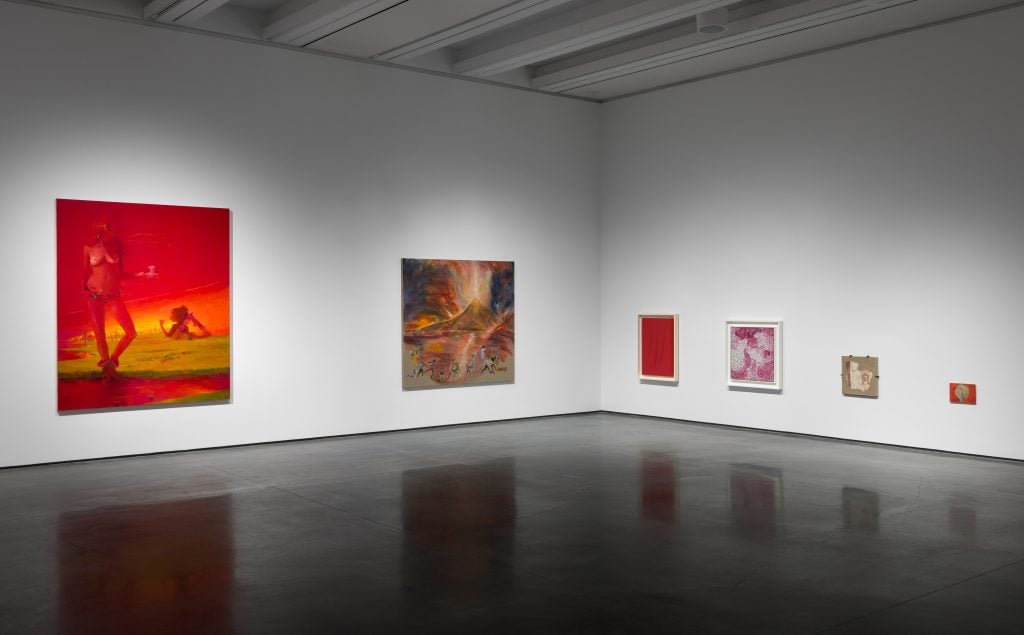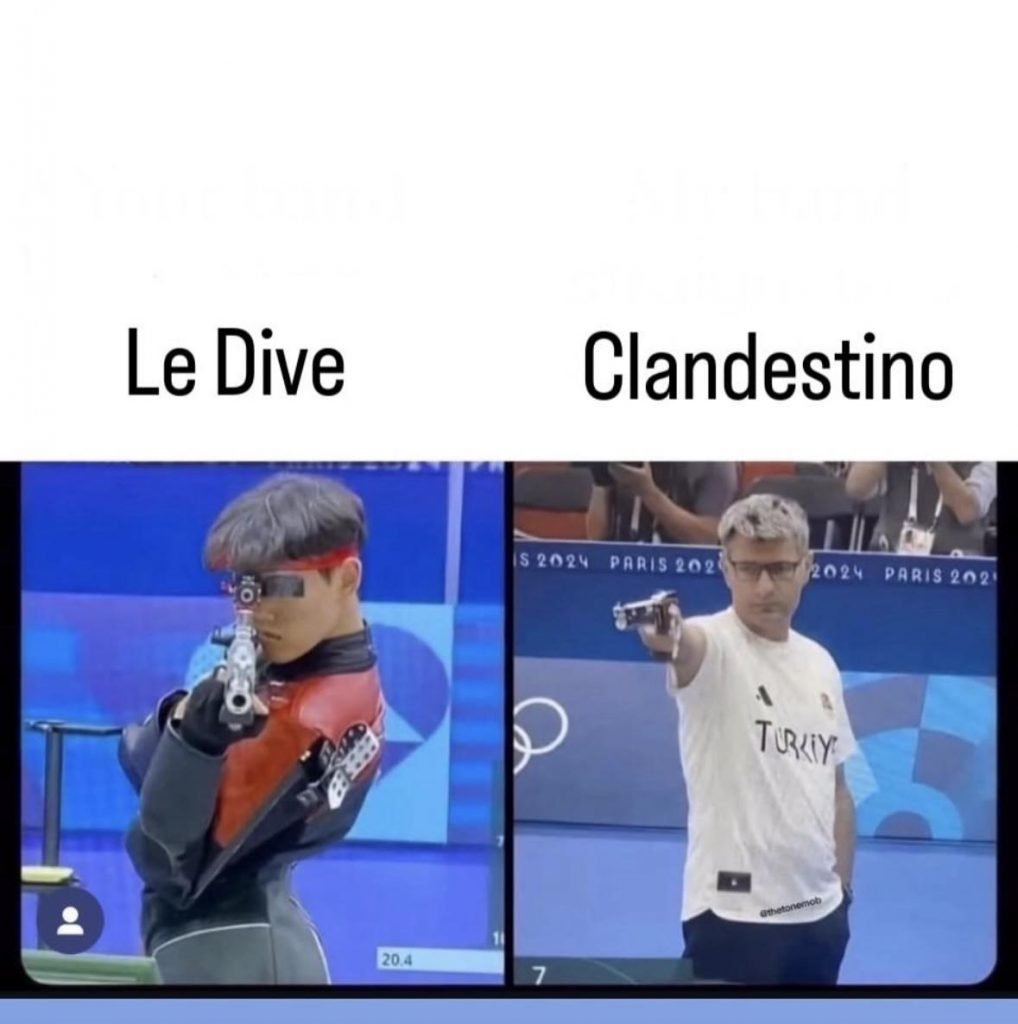Wet Paint
Scaling the Peaks of Affluence for Aspen’s Art Week, and More Juicy Art World Gossip
Plus, which Los Angeles gallery is looking to hire a pig? What star art couple has reportedly broken up?

Plus, which Los Angeles gallery is looking to hire a pig? What star art couple has reportedly broken up?

Annie Armstrong

Every week, Artnet News brings you Wet Paint, a gossip column of original scoops. If you have a tip, email Annie Armstrong—who’s spending her summer in Los Angeles—at [email protected].
God, I miss using a certain outdated suite of clichéd phrases: “brisk sales”, “high-flying collectors”, “flowing champagne”, “paintings flying off the wall.” Were we ever so beautiful? These little darlings of art media have been collecting dust since the market downturn. But just in case, I packed them in my luggage to go check out the scene in Aspen during their art week. Good news: the dream of the art market in 2021 is alive and well there.
Or at least that was the chatter among the art set at beloved local watering holes Casa Tua and Clark’s Oyster Bar. For those who didn’t make it to the Rockies this year, conversations generally revolved around one of two things: How much better quality the brand new Aspen Art Fair is than Intersect Aspen, and, perhaps more pronounced, the Aspen Art Museum’s new director Nicola Lees, and how she’s taking the museum in an exciting direction.
That may sound like hot air, but it’s not. Let’s start with point one.
For the past five years, Intersect—hosted annually at the Aspen Ice Garden ice rink—has been the art fair most associated with Aspen. This year, its co-founders Becca Hoffman and gallerist Bob Chase (owner of the local Hexton Gallery) brought several galleries over with them to the tony Hotel Jerome for the inaugural edition of the Aspen Art Fair.
“In Aspen, it really has to feel like an art adult summer camp,” Hoffman told me, who had been guiding hikes among the mountains for collectors all week. And how has that summer-camp vibe paid off? “It has exceeded my expectations,” she beamed. “People are doing great business.”

Artist Dustin Yellin and Aspen Art Fair co-founder Bob Chase fist bump at the Hotel Jerome. Zach Hilty/BFA.com.
“It’s an upgrade from the ice rink,” Galerie Gmurzynska’s director Lucas Bscher put it plainly. He was fresh from selling a Marjorie Strider painting for $150,000, and didn’t wince as collectors took photos fitting their hand on a Joan Miró sculpture with a handprint in it. Next door, Perrotin was hawking Paola Pivi sculptures for $90,000, and a Nick Doyle wall piece made from denim for $32,000.
The most expensive artwork I heard that sold was a sculpture by Fernando Botero for $800,000 at Italian gallery Secci’s booth. Secci told me that he had considered coming to Aspen for years, and the increase in quality at the Hotel Jerome’s fair sold him on it. “I was looking at Aspen in general, as it’s a place with a lot of collectors and high net worth individuals. But I wasn’t sure about the quality of the other fair,” he said. ”When Becca invited us here and I saw the quality was substantial, I thought it was the right moment.”
Even at a lower price point, artworks were flying off the walls. Los Angeles-based gallerist Carlye Packer told me that she sold six paintings of poodles by Adam Stamp for between $4,000 and $8,000 to a mix of Aspen locals and collectors who flew in for the fair. “I think it is a hard town to break into, socially and with selling,” she said. “But we’ve been doing leg work for some time now, so it’s very natural and fun for us here.”
These brisk sales (oof, that felt good) are anomalous compared to everything else that I’ve heard about selling art this summer. It seems like a savvy move to take advantage of a town so wealthy that it is effectively impervious to the economic climate of the rest of the country.
There’s no better evidence of that than ArtCrush, the annual gala that benefits the Aspen Art Museum. Many gallerists who did not show at the fair showed up just for the gala to support works donated for the live auction, and to hobnob with the local clientele—another advantageous move. Money simply flew through the tent on the night of the gala.
A live auction led by Christie’s yielded some incredible results. A sculpture by Kennedy Yanko sold for $190,000, a Jacqueline Humphries piece went for $400,000, and my favorite, Kathleen Ryan’s decaying lemon (my favorite piece from the auction) sold for $280,000. “When you don’t like lemonade, you just get a lemon,” Clearing’s founder Olivier Babin chimed into the microphone when it sold.
I heard that one table at the event alone will run you $200,000. Somewhere during this rush of sales, the auctioneer, Adrian Meyer, made the following odd plea to the crowd: “Come on, there are people that are starving!” All said, the event raised a whopping $4.5 million for the small, non-collecting museum. To put that into perspective, the most recent Hammer Museum gala broke its own records by raising $3.6 million earlier this summer, and the Whitney crested just over $5 million in fundraising at their gala the same week.
Anyhow, their funds are certainly spent quite elegantly. Their new director, the aforementionedLees, meekly stated “I really love my job,” to the audience’s applause during the gala.
All week, programming from the museum lit up the town. I got into Aspen just in time to see the legendary Ryan Trecartin’s return to making new work with his performance Audience Plant, which he performed at the top of Aspen Mountain alongside Jason Moran. The musical performance was plucky and cacophonous, taking place on a mound of used ski gondola parts. Trecartin sat atop the structure, grinning throughout, playing the synthesizers for the purple mountain’s majesty. A crowd including Jasmin Tsou, Brian Donnelly (aka KAWS) and wife Julia Chiang, Anne Philbin, Aria Dean, Brendan Dugan, Scott Rothkopf, Dustin Yellin, and Trecartin’s gallerist Al Morán all grinned along with him.

Installation view: In the House of the Trembling Eye , an exhibition staged by Allison Katz, Aspen Art Museum, 2024. Photo: Daniel Perez
Furthermore, I can say with confidence that the show currently on view at the Shigeru Ban-designed institution is enough to inspire a visit 7,900 feet above sea level. Artist Allison Katz’s curatorial vision, titled “In The House of the Trembling Eye,” imagines a contemporary interpretation of the eruption of Mount Vesuvius and life in Pompeii just before it was turned into a smoking hole in the ground. Alongside expertly curated work by artists like Wade Guyton, Charline von Heyl, Maurizio Cattelan, Gertrude Abercrombie, Hugh Hayden, and Jill Mulleady (just to name a few of my favorites in the show) are artifacts, fragments, and bits of fresco from Pompeii.
Organized into several different perspectives on life in Pompeii, the room centered around the eruption itself—wall works in various shades of red grow larger from left to right as you enter the room—and overall gives a feeling of bewitching apocalyptic dread. A tour led by Katz saw her explain that in curating this final room, and installing the final bit of 2,000-year-old fresco on its wall, she thought of “how you think and live among climate destruction. It’s so terrifying that it can really only be expressed through objects of the very far past.”
I stepped back out into the lush green mountains—where wildfires crawl higher every year—and knew it was an experience of art that I will never forget. Cheers to Aspen, where the world’s problems haven’t quite reached this elevation.

I’m pretty sure this is the best use of this meme format from the Olympic shooting competitions… In an Instagram reel, occasional art collector Diplo showed the masses how businessmen in Basel float down The Rhine to work… According to the diligent reporting of a stan account for Agron, contentious power couple Harold Ancart and Dianna Agron have called it quits… Cool job alert: Dan Colen‘s Sky High Farms is hiring a new design and production coordinator… And finally, does anyone have a porcine connect for Various Small Fires’s project with The Harrison Studio?…